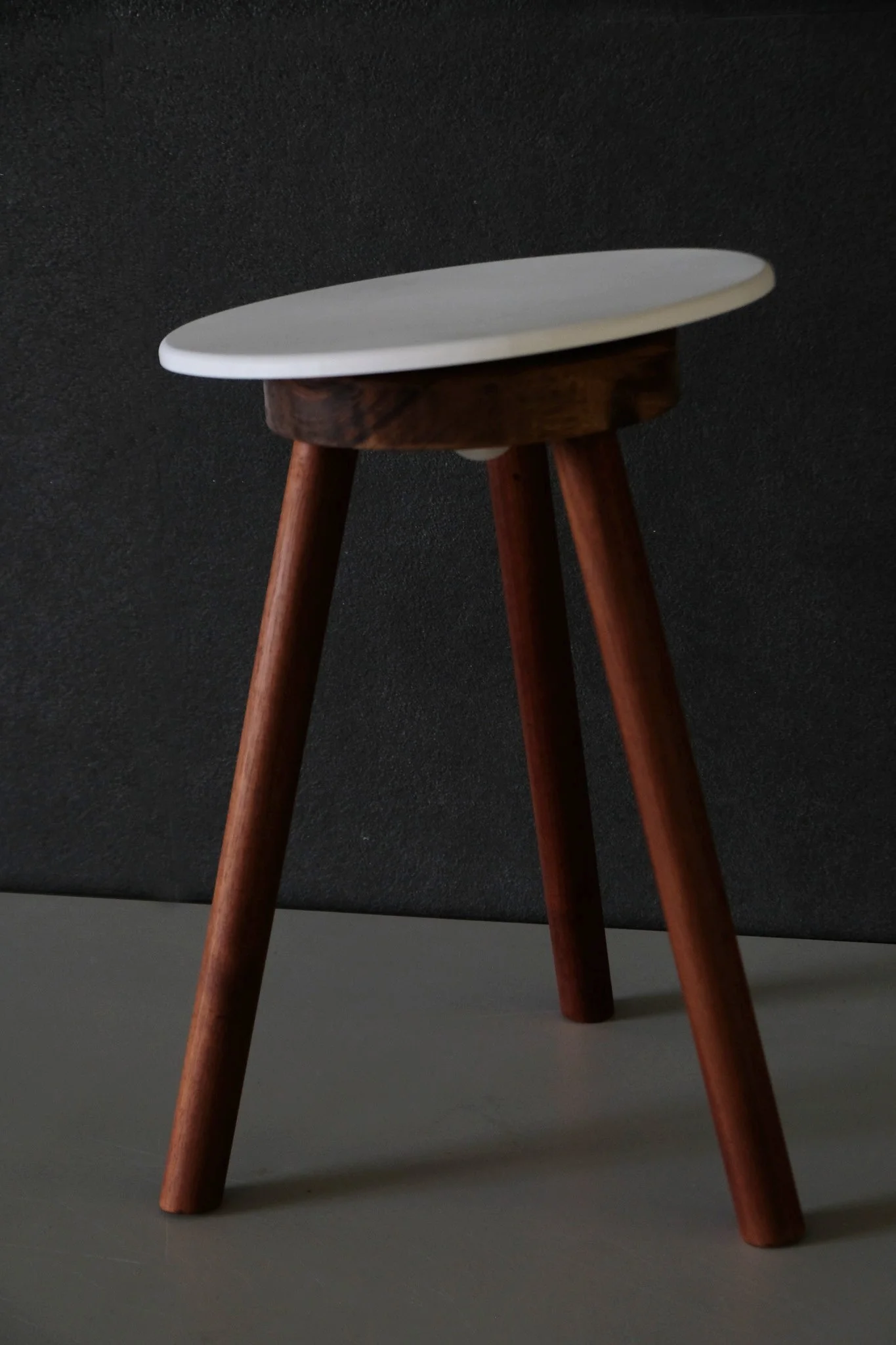Wobble
A dynamic active seating stool that brings movement into your sitting routine
Problem:
Sedentary lifestyles cause many health issues, prompting the need for a unique solution like Wobble that addresses this by providing a dynamic, active seating solution.
Solution:
Wobble is a dynamic active seating stool designed to combat the health issues associated with prolonged sitting. The design features a traditional 3-legged base with a rotating, tilting seat.
Tools:
Rain Wood
Woodworking Machinery(Bandsaw, hand router, lathe)
3D Printing
Solidworks
Keyshot
Timeline + Type:
3 Weeks
Product Design | Prototyping | Mobile UX | User Research | Gamification | Interaction Design
Research
My research for the Wobble project is focused on understanding the landscape of active seating solutions to address health issues associated with sedentary lifestyles. I delved into available data, including statistics from Statistics Canada, insights from the National Institutes of Health, and also interviewing my fellow peers.
Findings
A sedentary lifestyle was linked to increased risks of cardiovascular diseases, diabetes, hypertension, and various cancers, underlining the critical need for active solutions.
There weren’t many products in the active seating, showcasing Wobble's potential for market differentiation.
People expressed frustration with the difficulty in managing their sedentary habits in relation to the their work lives and a desire to optimize their daily activities.
On average, Canadian adults self-reported 3.2 hours per day of recreational screen time and 5.7 hours per day of sitting time.
- Statistics Canada
A sedentary lifestyle increases all-cause mortality and the risks for cardiovascular diseases (CVD), diabetes mellitus (DM), hypertension (HTN), and cancers (breast, colon, colorectal, endometrial, and epithelial ovarian cancer).
- National Institutes of Health
Prototyping
To test out the concept, I started with a 3D printed 1:3 scale model. My goal was to create a ball socket joinery that would keep the top secure in place while allowing it to rotate. However, I encountered some challenges working with this method, so I took a step back and went back to brainstorming.
After some brainstorming, I came up with a different approach that guarantees better security. It involves an extending component from the top and a fitting piece from below that goes right through the base of the seat. This new solution provides a stable connection while still allowing for the desired rotation and tilting of the seat
Renderings
To start off the stool-making process, I headed to the store Roger & Sons to carefully pick out the materials. For this prototype, I chose to use raintree wood for the base and some off cut dowels for the legs.
Manufacturing
Material Selection:
Woodworking:
For the wooden base, which forms the foundation of the stool, I used the lathe to carve a smooth and even dome cutout into the base. Afterwards, I sanded it to create a smooth surface. For the legs, I cut them to 40 cm and at a 14 degree angle to fit the design of my stool
Plastic Seat:
The plastic seat is made from two components; an acrylic sheet for the top and a 3D printed component for the dome. For the acrylic sheet, I used the CNC to cut it to a circular profile and a hand router to create a filleted edge. The 3D printed dome was created to fit nicely inside the cutout of the base. I also 3D printed another part to fit through the bottom to secure the seat to the base.
Assembly:
Putting it all together was quite straightforward. Following an easy three-leg joinery method, I marked the leg placements, glued them in with some wood glue, and added extra security with drilling from the top of the base.
Finishing:
To add final touch, I used a coat of teak oil which gave the wood a nice warm finish. I also used a few layers of white matte spray paint to coat the plastic seat.



















